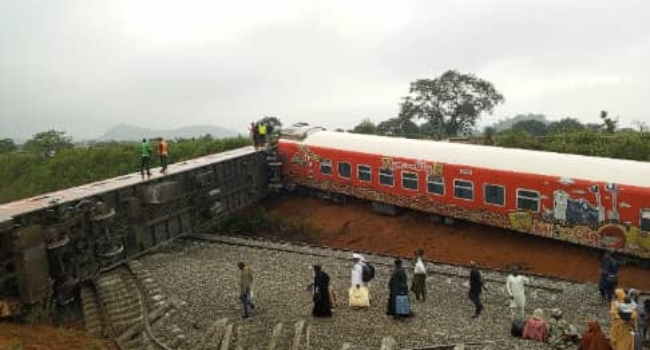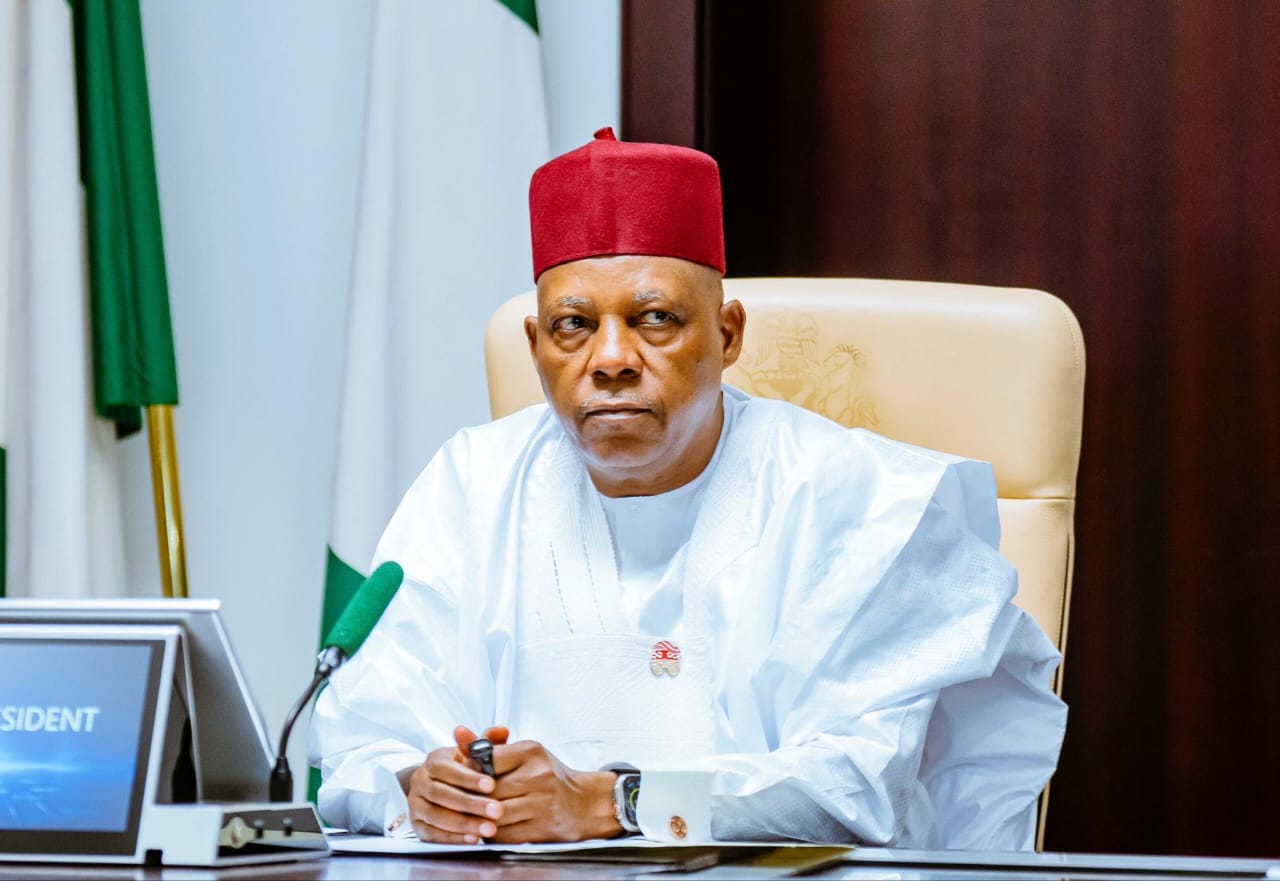Kano-Maradi rail project for completion March 2027
More facts have emerged on the recent train derailment at the 49 Kubwa-Asham section, in which no fewer than 50 passengers out of the 583 persons on board were injured.
Preliminary report, released yesterday by the Nigerian Safety Investigation Bureau (NSIB), revealed that some sleepers at the Asham Station that had been previously damaged were not replaced, but rather only patched by the railway management.
The NSIB, in its report, said initial findings further revealed that the train derailment was the second at the same station within 13 months. The report also revealed that the Nigerian Railway Corporation’s (NRC) Asham Station automatic crossing point switch mechanism was found unserviceable as of the time of the accident, while the switch point was manually operated and locked with the point clip, which was also broken.
Besides, the preliminary report indicated that the NRC personnel had only initial training without formal refresher training, adding that the operational and maintenance equipment, including spare Original Equipment Manufacturer (OEM) parts, were not readily accessible.
The report revealed that some instruments and gadgets, like the Closed-Circuit Television (CCTV) cameras, remained deferred and unserviceable. The NSIB, in its safety recommendation, also advised the NRC to ensure that all sleepers affected by derailments are replaced to guarantee track stability and prevent reoccurrences.
The report added: ‘The NRC should consider replacing all point switches at Asham Station and along the Abuja–Kaduna route with the OEM parts to ensure reliability and safety in switch operations, thereby reducing the risk of accidents.
“The NRC should consider addressing all areas where cautionary advisories are issued to train drivers, in order to enhance operational safety and minimise the risk of accidents.
“The NRC should provide formal refresher training for NRC personnel to ensure staff remain up to date with safety procedures and operational best practices.”
It also recommended to the NRC to restore all defective equipment, such as communication equipment, CCTV cameras, clocks, and other critical instruments to OEM standards, stressing that these are vital for effective monitoring, safety, and operational efficiency.
The train accident occurred on Tuesday, August 26, 2025, on the Abuja–Kaduna rail line. Director-General of the NSIB, Captain Alex Badeh, in his earlier briefing on the accident, said the train consisted of eight passenger coaches with one locomotive at the front and one at the rear.
According to him, the train departed Idu Station, Abuja, at 09:45 hours and stopped at Kubwa Station at 10:04 hours before continuing its journey.
MEANWHILE, Minister of Transportation, Sa’idu Ahmed Alkali, has said the Kano-Maradi rail project would reach Katsina by December 2025 and be completed by March 2027. He dropped the hint yesterday at the second transport summit of the Transportation Correspondents Association of Nigeria (TCAN) in Lagos.
Represented by NRC’s Managing Director, Dr. Kayode Opeifa, the minister said the Kaduna-Kano and Kano-Maradi ongoing rail project recorded appreciable execution progress from five per cent to 15 per cent at the inception of the current administration to over 50 per cent and 60 per cent.
He also mentioned that the Federal Executive Council (FEC) recently approved the construction of one modern bus terminal each in Abeokuta (South-West); Onitsha (South-East); Warri (South-South); Kano (North-West); Lokoja (North-Central), and Gombe (North-East).
The development, Alkali said, would address challenges of operational inefficiencies, intra-city traffic congestion, unregulated motor parks, and safety hazards affecting passengers and transport operators across the federation.
The minister said the ongoing rail modernisation projects from Lagos-Kano, the rehabilitated Old Narrow Gauge from Lagos to Kano and rehabilitation of the Old Narrow Gauge from Port Harcourt-Maiduguri with many more others like the High Speed Rail from Lagos to Abuja, Lagos to Kano and Port Harcourt to Abuja are indicators of the administration’s dedication for the development of the transportation sector in the country.
He emphasised that while the Port-Harcourt to Aba segment of the ongoing Port-Harcourt-Maiduguri rail modernisation project had been completed and put into use.
Also speaking, Minister of Marine and Blue Economy, Adegboyega Oyetola, explained that the National Marine and Blue Economy Policy is geared at reducing logistics costs, enhancing trade competitiveness, and unlocking private sector investment in the nation’s maritime and transport sectors.
Represented by the Director of Maritime Services, Dr. Mercy Iloro, the minister said the policy lays the groundwork for seamless integration across road, rail, barge, and pipeline networks.
He outlined key initiatives already in motion, including operationalisation of the Lagos–Ibadan Standard Gauge Rail line for cargo evacuation; expansion of barge services at Lagos and Onne ports; completion of the Apapa-Oshodi Expressway, and inauguration of the 27-kilometre Lekki Port Access Road.
Oyetola also highlighted the development of inland dry ports in Ibadan, Kaduna, Kano, and Funtua as a strategy to decongest seaports and strengthen regional trade routes.
Earlier in his speech, Chairman of TCAN, Tola Adenubi, said that Nigeria is still grappling with the absence of a national transport policy that should guide its modes of transport.






